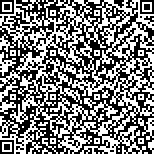| 本文已被:浏览 1868次 下载 1397次 |

码上扫一扫! |
| 3D打印联合术中超声在腔镜下治疗完全内生型肾肿瘤中的应用(附15例报告) |
| 储传敏1,刘溪1,潘秀武1,黄海1,干思舜1,叶剑青1,崔心刚1*,王林辉2* |
|
|
(1. 第二军医大学东方肝胆外科医院泌尿外科, 上海 201805;
2. 第二军医大学长征医院泌尿外科, 上海 200003
*通信作者) |
|
| 摘要: |
| 目的 探讨联合应用3D打印技术及术中超声精确定位辅助腹腔镜下肾部分切除术治疗完全内生型肾肿瘤的可行性。方法 2014年3月至2016年3月,应用3D打印技术联合术中超声定位辅助腹腔镜下肾部分切除术治疗完全内生型肾肿瘤患者15例,术前均采用CT三维影像重建并用Formlab Form1+3D打印机进行3D模型打印。所有患者中男11例、女4例,年龄(55.7±10.5)岁,肿瘤直径(2.8±1.0) cm,腹侧3例、背侧12例,均为单发肿瘤。统计分析术中出血量、热缺血时间、术后病理和切缘以及术后肾功能变化情况等临床资料。结果 15例完全内生型肾肿瘤患者均顺利完成腹腔镜下肾部分切除术。平均手术时间(105.0±20.6) min,平均热缺血时间(22.8±3.5) min,平均术中出血量(87.3±15.8) mL。术中及术后均未输血,术后平均住院(6.7±1.0) d。术后未发生明显并发症。手术切缘均阴性,13例患者为透明肾细胞癌,2例为乳头状肾细胞癌。随访(23.7±11.8)个月,未见持续肾功能恶化,无肿瘤复发。结论 完全内生型肾肿瘤患者术前应用3D打印技术能明确肿瘤位置及毗邻关系,通过指导手术方案的制定控制手术风险。利用3D打印肾脏模型宣教能改善患者对手术的认知,简化术前谈话流程。进一步通过术中超声对肿瘤切除方案进行修正及优化,可减少肾血管和集合系统的损伤,达到保证切缘阴性和肾功能最大化保留的临床效果。 |
| 关键词: 3D打印模型 腔内超声检查 腹腔镜肾部分切除术 肾脏肿瘤 |
| DOI:10.16781/j.0258-879x.2017.08.1065 |
| 投稿时间:2017-07-25修订日期:2017-08-18 |
| 基金项目:上海市科委医学引导类(中、西医)科技支撑项目(17411960200). |
|
| Application of 3D printing technique combined with intra-operative ultrasound for completely endophytic renal tumor in laparoscopic surgery |
| CHU Chuan-min1,LIU Xi1,PAN Xiu-wu1,HUANG Hai1,GAN Si-shun1,YE Jian-qing1,CUI Xin-gang1*,WANG Lin-hui2* |
(1. Department of Urinary Surgery, Eastern Hepatobiliary Surgery Hospital, Second Military Medical University, Shanghai 201805, China;
2. Department of Urinary Surgery, Changzheng Hospital, Second Military Medical University, Shanghai 200003, China
*Corresponding authors) |
| Abstract: |
| Objective To explore the feasibility of 3D printing technique combined with intra-operative ultrasound for locating completely endophytic renal tumor in laparoscopic nephron-sparing surgery. Methods Fifteen patients with completely endophytic renal tumor, who underwent 3D printing technique combined with intra-operative ultrasound assisted localization of laparoscopic partial nephrectomy from Mar. 2014 to Mar. 2016, received CT image 3D reconstruction and 3D printing kidney model using Formlab Form1+ 3D printer before operation. Among 15 patients aging (55.7±10.5) years, 11 patients were male and 4 were female; the tumor diameter was (2.8±1.0) cm; and 3 cases were ventral and 12 were dorsal, all had solitary tumors. The clinical data, including intra-operative blood loss, warm ischemia time, post-operative pathology and surgical margins, and post-operative renal function, were statistically analyzed in this study. Results Laparoscopic partial nephrectomy was successfully carried out in all cases:the average operation time was (105.0±20.6) min, the average warm ischemia time was (22.8±3.5) min, and the mean intra-operative blood loss was (87.3±15.8) mL. No case received blood transfusion during or after operation, and the average post-operative hospital stay was (6.7±1.0) days. No obvious complication occurred after operation. The surgical margins were all negative. Post-operative pathology confirmed that 1 3 patients were with clear cell renal cell carcinoma, and 2 with papillary renal cell carcinoma. Patients were followed up for (23.7±11.8) months, and no continuous deterioration of renal function or tumor recurrence was found. Conclusion Pre-operative 3D printing technique for patients with completely endophytic renal tumor can help to determine the tumor location and adjacent relationship, reducing the risk of surgery by guiding operation scheme. Meanwhile, propaganda and education using 3D printing kidney model can improve patients' cognition to surgery and simplify pre-operative conversation process. Furthermore, utilizing intra-operative ultrasound to optimize tumor resection scheme can reduce the damage to the renal vessels and collection system, maximizing the clinical benefit by ensuring negative margin and renal function reservation. |
| Key words: 3D printing model endosonography laparoscopic partial nephrectomy kidney neoplasms |
.jpg)
.jpg)